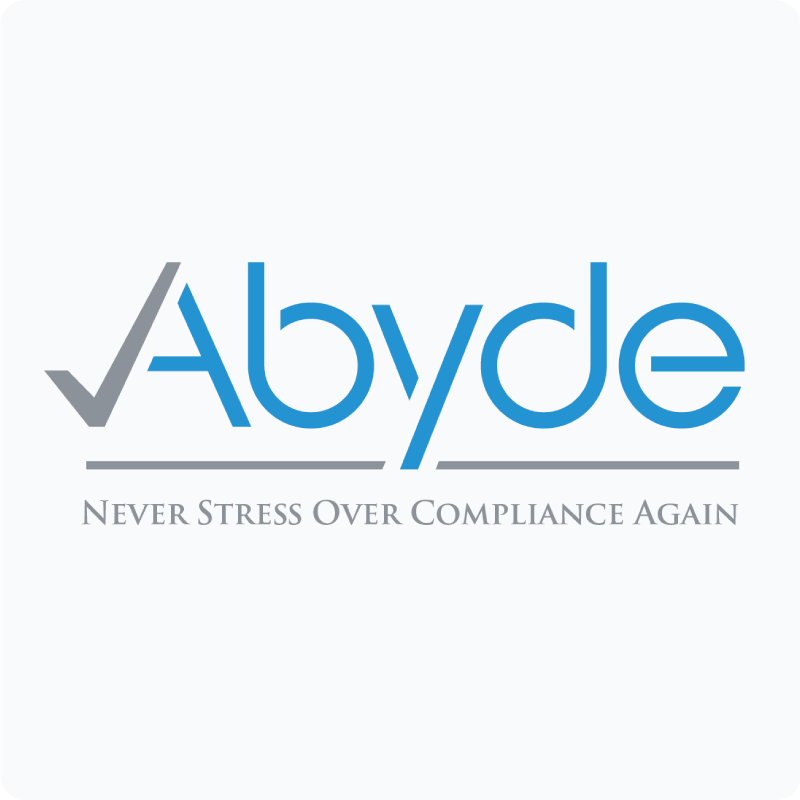January 13, 2023 To keep up with inflation and the ever-changing cost-of-living adjustments, the U.S. Department of Labor announced changes to Occupational Safety and Health Administration (OSHA) civil penalty amounts today. As part of a Congressional act passed in 1990, the Federal Civil Penalties Inflation Adjustment Act, and amended by the Federal Civil Penalties Inflation Adjustment Act Improvements Act of 2015, the Department completes an annual review by January 15th to evaluate and adjust civil money penalty levels against inflation. We can expect the new penalty amounts, shown below, to take effect on January 17, 2023. Currently, penalties for serious and other-than-serious violations are $14,502 per violation. With the recent update, we are seeing over a $1,000 increase to $15,625. Repeated violations aren’t getting a break either with an increase to $156,259 per violation from the previous $145,027. Type of Violation Penalty SeriousOther-Than-SeriousPosting Requirements $15,625 per violation Failure to Abate $15,625 per day beyond the abatement date Willful or Repeated $156,259 per violation Curious about state-specific updates? Per the U.S. Department of Labor, states that operate their own OSHA Plans are required to adopt maximum penalty levels that are at least as effective as Federal OSHA’s. State Plans are not required to impose monetary penalties on state and local government employers. This new rule goes into effect on January 15, 2023. It will apply to any penalties assessed after January 15, 2023. Before you go egging the next OSHA enforcement officer you come in contact with, remember that these annual updates are in place to remind you of the importance of maintaining a safe and healthful work environment.
A New York Health Center’s Case is Denied Under OSH Act
November 28, 2022 Hey, ref – blow the whistle already! Back in June of 2021, the U.S. Department of Labor filed suit against a New York health center due to an alleged violation of the OSH Act. It was reported that the NY health center suspended and later terminated an employee who had reported personal concerns about exposure to COVID-19. The employee, also known as the whistleblower did so under the OSH Act, which protects workers from retaliation when reporting a hazardous work condition. The health center proceeded to file a motion in October of 2021, preventing the department from seeking damages for the whistleblower. Fast forward to September of this year, a federal court has rejected the health center’s case under the protection of the OSH Act. Regional Solicitor of Labor, Jeffrey Rogoff adds, “This is a significant decision reaffirming the U.S. Department of Labor’s independent authority to pursue legal actions and relief for employees in the name of the public interest. The Office of the Solicitor of Labor will continue to aggressively bring cases seeking to vindicate the rights of whistleblowers, who are essential to the proper functioning of laws protecting the health and safety, wages, and wellbeing of the American workforce.” More investigations from the OSHA’s Division of Whistleblower Protection Programs are underway in New York. So what can we take away from this? As a reminder, the Whistleblower Protection Program enforces the provisions of more than 20 federal laws. These protect your employees from retaliation from raising or reporting their concerns about hazards of violations of various workplace safety and health. Make sure your office is a safe place where employees can voice their concerns, but more importantly you are taking the proper steps upfront to ensure your practice meets the necessary safety and health standards.
All Hands In For the OSHA Safety and Health Committee
October 21, 2022 Book clubs are cool. Fantasy football leagues deserve their moment. But do you know what the elite of all groups and clubs is? For us, it’s an OSHA safety committee. The US Department of Labor says, “the safety and health committee is an integral part of the safety and health program, and helps ensure effective implementation of the program at the establishment level.” We know firsthand that a group is always better together. So what does a safety and health committee even do? The committee helps improve the organization’s understanding of workplace safety and encourages co-workers to follow best practices in order to prevent workplace injury and illness. Additionally, they review current safety programs and recommend changes, as needed, to all safety and health procedures. Think of this committee as a soundboard for employees to voice their concerns and recommendations. Although practices cannot always prevent injuries or illnesses, implementing a safety committee is a significant step to help lower injury and illness rates. And we all know, lower rates equate to happier employees. The safety and health committee should meet regularly (we recommend a monthly cadence – quarterly at a minimum) and bring its findings to the OSO (OSHA Safety Officer). And because we like to give advice away for free ninety-nine, here are a few ideas to get you started: Maintaining safety and health is very important, to say the least. And if the US Department of Labor hasn’t given you any indication of that, this is not a solo job. Now let’s get all hands in because it is everyone’s responsibility to ensure a safe work environment. On three… LET’S GO OSHA! Want more on state specifics guidance? Give us a call to discuss industry guidelines.
North Carolina Department of Labor Increases State OSHA Penalties and Updates Investigation Timelines
October 13, 2022 Do you get surprised and frustrated when policies change? How about when your bill was more expensive than you originally thought? We can relate. The North Carolina Department of Labor increased state OSHA penalties and investigations to match current Federal OSHA standards through the Appropriations Act. Starting October 1st, fines will increase and follow the same pattern every January 1st. Prior to this change, if a practice was fined the maximum under NC OSHA the cost to the practice would be: Wow, that’s a lot of dough – and we’re not talking about the pizza or cookie kind! And if you though that was expensive, here is what a violation will cost now: Notice anything special about the fines above? Some can be “per day”. We all know time is money and there’s no exception when it comes to OSHA. Not only are the penalties changing, but the time frame to issue citations is as well. Previously, citations could be levied up to six months from initial reporting. Also being implemented on October 1st, NC OSHA has six months from the first inspection to levy a citation, not from initial reporting like before. Don’t get me wrong – we love a good limbo at a party, but not when it comes to OSHA citations! The famous Pablo Piccaso said, “Action is the foundational key for all success”. With North Carolina amending a few OSHA policies, take the time to educate yourself to avoid any costly violations.
Abyde Launches OSHA Software Solution for Healthcare Practices Nationwide
October 13, 2022 Industry-leading compliance solution provider, Abyde, today announces the launching of OSHA for Healthcare – a revolutionary software to complement their existing HIPAA solution. Abyde’s OSHA for Healthcare offers practices of any size to easily implement and sustain a compliance program that meets federal government regulatory requirements. Built by industry veterans and experienced developers, the software mimics the ease of use that customers have come to expect with the existing Abyde HIPAA platform. OSHA for Healthcare is available to all independent practices across the nation including, but not limited to: dental, eye care, chiropractic, and dermatology. This one-of-a-kind solution was designed to alleviate the stress of managing a complex compliance program in-house, while simultaneously providing real-time support from a team of experts and educational resources that go beyond the software. The software encompasses components such as Facility Risk Assessment, custom policy generation, complete employee training, safety and health logs, and more. “We have always had larger visions for Abyde beyond HIPAA compliance so we are ecstatic about launching our revolutionary OSHA compliance solution”, said Matt DiBlasi, Abyde President. “Our main objective for OSHA was to keep the simplicity and ease of use that has made Abyde the industry leader over the last 6 years. To say we’ve ‘nailed it‘ might be an understatement. We are so proud of all the hard work that went into creating such a uniquely better platform and we can’t wait for providers and staff to get their hands on it!” Demos of OSHA for Healthcare and educational consultations are currently available to all practice types. If you are an existing Abyde user, schedule a demo of the software here or an educational consultation here. For all those who are not current Abyde users, please schedule here.
OSHA Inspection Process & Budget
October 11, 2022 With all of the OSHA inspections that are conducted throughout all the major sectors, you would be surprised to find out that the healthcare industry makes up 12% of those inspections! With the total average number of OSHA inspections leaning towards 34,000 a year – 14,000 of those inspections are related to the healthcare industry alone. You may be thinking to yourself how does the whole OSHA inspection process work? Well, you are in luck! Let’s get into the nitty gritty of it all. Anyone who is covered by the Occupational Safety and Health Act has the ability to request an OSHA inspection, or OSHA could also make an unrequested inspection. If and when an inspection is conducted, it is typically done with no notice at all – talk about an uninvited guest! For the inspection itself, it will include an opening conference, “walkaround” of the workplace, and a closing conference. The opening conference will begin once the inspector arrives and meets with the representatives. This part of the inspection is to be as short as possible and ensures that the inspection will cover all hazards that were mentioned in the complaint. After the opening conference, the inspector will conduct what’s called the “walkaround”. This is where the inspector and any representatives will check the facility for any safety and health hazards that were included in the initial complaint. The inspector could potentially check for any other hazards if they choose. The inspector would speak with any affected employees and employees are encouraged to point out any hazards and mention any past accidents, illnesses, and employee complaints. During the initial walkaround, the inspector may use any equipment to measure noise, dust, fumes or any other hazardous exposure. If you are unsure of what they are doing, don’t be afraid to ask. After the walkaround is complete, the OSHA inspector will bring any violations to the attention of the employer and employee representatives at the time they were discovered. Last thing is the closing conference, where the OSHA inspector where the OSHA inspector has to conduct a closing conference, whether it is jointly or separately, and will go over any apparent violations, ways to correct them, deadlines, and potential fines. And that wraps it up! Phew! Now let’s talk about MONEY! Every year OSHA introduces a plan and budget to substantiate their existence. In August, the Senate proposed an 11.1% funding increase for OSHA in the fiscal year of 2023. The Department of Labor, HHS, Education and Related Agencies Appropriations Act of 2023 proposes $679.8 million for OSHA in 2023, which is $68 million more than 2022. There is a House funding bill as well that proposes $712 million for OSHA; if the finalized budget is passed the amount would fall somewhere in between the two amounts that were proposed. With all that being said, having a larger budget could mean hiring more inspectors who could potentially knock on your door! Now that you’re familiar with the inspection process, wouldn’t it be nice to know you can be confident in your practice’s OSHA program? In walks Abyde – and we are a guest that usually brings doughnuts when we walk through your door!
Kickstart your OSHA Compliance Program with a Facility Risk Assessment
October 11, 2022 If you are familiar with OSHA compliance, you may know that you need to complete a Facility Risk Assessment, otherwise known as a Workplace Hazard Assessment. Tomato, toe-mat-oh, right? Despite the differing names, it’s important to know that this assessment helps your organization to identify, minimize and eliminate hazards in the workplace with the goal of providing a safe and healthful work environment for all employees. Think of your Facility Risk Assessment (FRA) as the meat and potatoes of your entire OSHA compliance program. This is a baseline survey of all the hazards in your workplace. Without properly identifying, and more importantly, documenting all hazards within your organization, you cannot move forward with the rest of your OSHA compliance program and cannot show that there is a culture of compliance within your organization. Additionally, in the case of an investigation, the FRA is going to be the first thing the government asks for, so that is why it is so important it is completed first. What kind of questions does your FRA need to include? Just as there is not a single recipe for a savory steak and potato meal, there is no single checklist to follow when it comes to completing a Risk Assessment for your organization. However, OSHA does recommend incorporating 7 core elements as part of your Facility Risk Assessment: Once you have completed your Facility Risk Assessment, you should not tuck it into a folder and forget about it. Your FRA must be reviewed periodically to ensure that it is up to date and accurately reflects all processes and controls within your organization. It’s also important to keep in mind that all employees should be involved in the process of mitigating hazards identified from your FRA. What’s the best way to tackle a Facility Risk Assessment? If your organization has not completed an FRA before or if you have but not sure if it was thorough, using an outside organization will help to ensure all areas of the FRA are fully completed and documented accordingly. A third party can also help add new areas and questions into the FRA that reflect changing regulations. Are you looking for help kickstarting your OSHA compliance program? Reach out to Abyde today for a customized, easy to complete FRA that is tailored to you and your organization.
Optometrists Need OSHA too!
October 11, 2022 “Why should I be concerned about OSHA? I’ve never heard anything about OSHA and vision clinics?”- an actual Abyde customer Optometrists can feel the sting from OSHA, but it isn’t a sting like getting shampoo in your eye that goes away after washing it out. It’s a financial sting, much like cutting a jalapeno and wiping your eye, and requires a more serious treatment method. OSHA is ramping up their staffing, and holding their regulations to the highest standards we’ve seen yet. Sure, when you put OSHA into your search bar you see hardhats and bright green vests, it doesn’t look like it applies to you. We are here to tell you no one is exempt from regulations unless specifically stated. We have done our research, we see the importance for our customers, and now it’s time to educate on why it applies to Optometry. Optometrists and their staff always use best practices in wiping down the chin and head strap before sending that always anticipated, but yet startling ‘puff’ to the eyeball. When sitting in the big chair and ready to use the machine that has patients looking like Dr. Robotnik, they always clean it beforehand. But, what may not be recognized is that the cleaning solution used in best practice, is required to be logged and updated under OSHA Standards. Let’s not forget about the education Optometrists give patients on the benefits of getting eyes dilated. When patients consent to wearing the cool disposable sunglasses, the Doctor’s responsibility is to have OSHA approved regulations in place while using the chemical. This includes but is not limited to having it logged in the Safety Data Sheet (SDS), but also making sure all staff is trained on usage to avoid any injuries. Documenting your hazardous chemicals and training staff for implementation, is part of the real definition of best practice according to us here at Abyde, and we of course give you everything you need to do so. While patients may need eye drops for getting shampoo in the eye, they won’t be getting any eye diseases that an Optometrist needs to treat. However, while treating eye diseases, OSHA standards for Exposure Control are required to be followed. That includes any bacteria, bloodborne pathogens, and maintaining proper protection is key! Let’s not forget the hazardous chemicals you’re using for treatment. Now that we’ve gone full circle, we haven’t even started the race on OSHA importance in Optometry. So, to answer the Abyde customer(s) who are wondering why they should be concerned about OSHA, we have much more education available for all of our Optometrists! Knowledge is power, (and in this case, a money saver), y’all.
North Texas Dental Practice, Fined $15K for OSHA Whistleblower Violations
March 3, 2023 Blow the whistle… No, not like the 2006 Too Short song but OSHA’s Whistleblower Protection Program. Whistleblower protection laws are in place to prevent retaliation against employees who report safety violations, discrimination, or other illegal activities in the workplace. Under the Occupational Safety and Health Administration (OSHA) Whistleblower Protection Program, employees who report such violations are protected from retaliation by their employers. This protection includes not only termination but also other forms of retaliation such as demotion, reduction in pay, or denial of overtime or promotions. Why would a practice retaliate for a complaint received instead of mitigating the risk and working toward a culture of compliance? That is a $15,706 question and unfortunately, Roger and David Bohannan of Roger H. Bohannan DDS Inc. have to answer. While on furlough in early 2020, a dental hygienist and dental assistant at the practice asked what coronavirus safety measures would be in place once patients and employees returned. When the practice did reopen, those two employees were not reinstated simply because they expressed their concerns and cited guidance from the Centers for Disease Control (CDC) and OSHA. Further investigation found that Bohannan Dentristry discriminated against employees for exercising their rights under section 11(c) of the OSH Act which prohibits retaliation by employers against workers who “blow the whistle” by exposing health and safety hazards. In a statement made by an OSHA Regional Administrator in Dallas, Eric S. Harbin, “Like all workers, these two people had every right to speak up without the fear of losing their jobs. We want workers to know that OSHA is here to protect their rights, and we won’t hesitate to exercise our authority when they are violated.” OSHA administers more than 20 whistleblower statutes, with varying time limits for filing. The time frame for filing a complaint begins when the adverse action occurs and is communicated to the employee. There are varying reporting deadlines from 30-180 days specific to each statute. It is important for employees to know that they have rights under the law to report safety violations and other illegal activities without fear of retaliation. Employers have a responsibility to provide a safe and healthy workplace, and OSHA’s Whistleblower Protection Program helps to ensure that employees can speak up when they see something that is not right.








